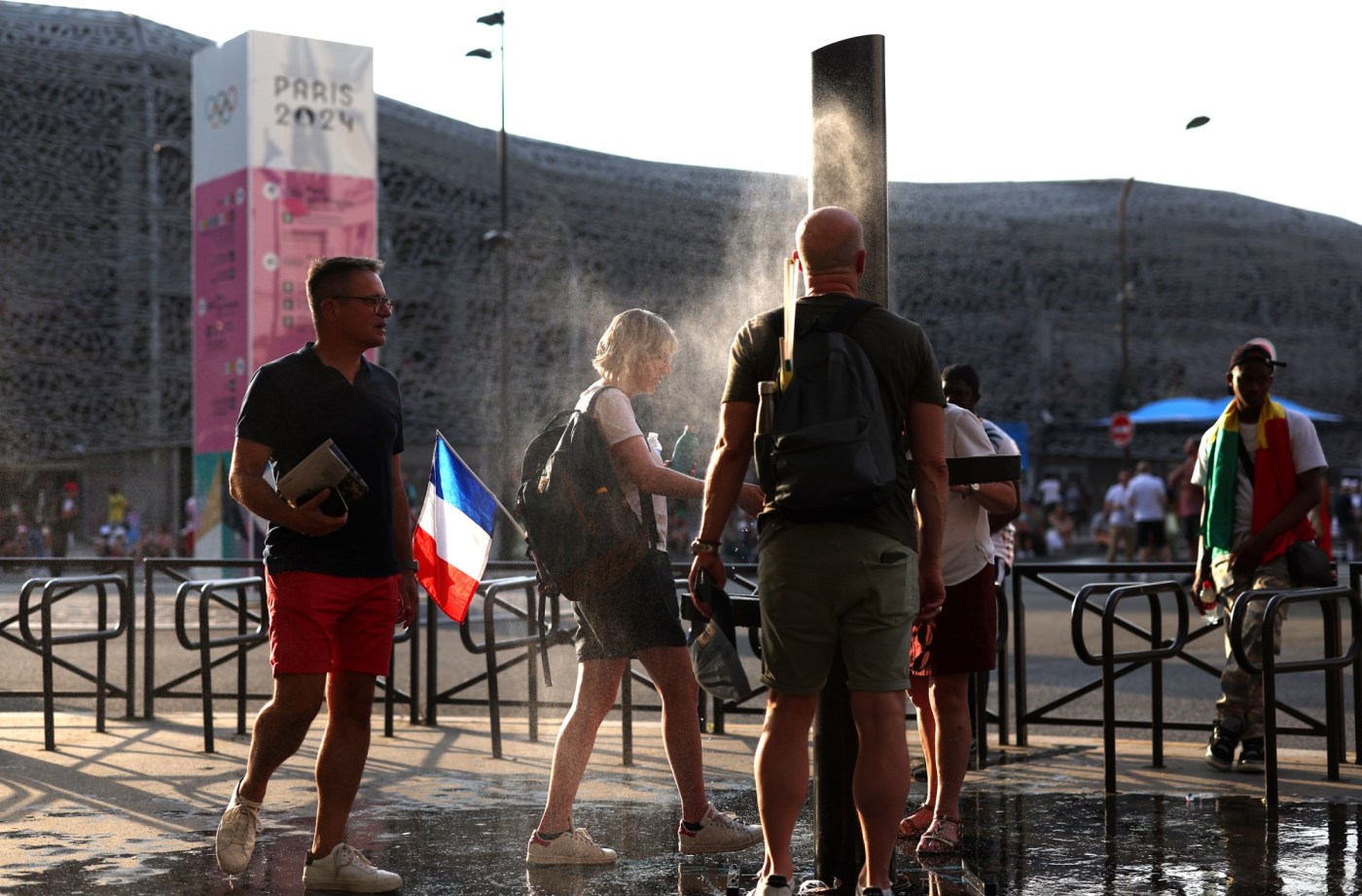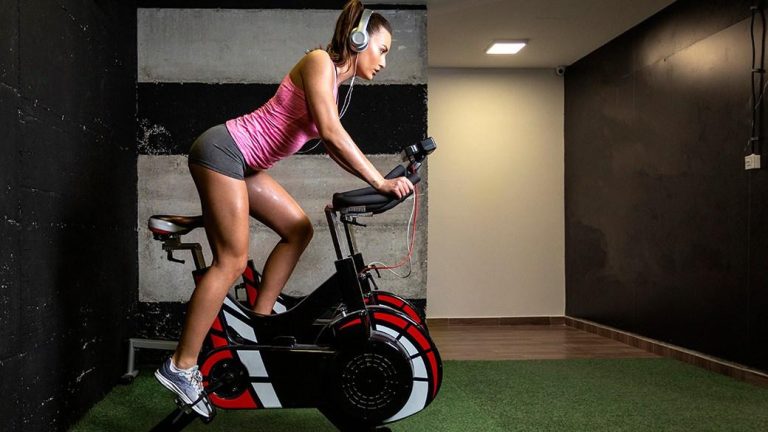David Wharton | (TNS) Los Angeles Times
PARIS — The thermometer read 95 degrees, but down on the beach volleyball court, with all that gleaming white sand, it felt like 102. The players used a short break to towel off and guzzle water.
“It was really, really hot,” Carolina Solberg Salgado said. “I was trying not to think of how [uncomfortable] I was.”
As she and her Brazilian teammate resumed their match against a Lithuanian duo, cheering erupted in a corner of the Eiffel Tower Stadium — a venue worker had stretched a rubber hose into the stands and was spraying the fans.
“It was great,” said Sean McKinnon of Toronto. “He hit full-pressure in the face of the poor girl next to us, but I think she appreciated it.”
Weather has been a challenge during the first week of these 2024 Summer Olympics, with conditions veering from one extreme to another.
A storm blew in for the opening ceremony, drenching the city with an inch of rain and hanging around long enough to postpone skateboarding the next day. Then came the heat.
Researchers worry that Paris represents the latest in an Olympic trend that has winter athletes scrambling to find enough snow and their summertime counterparts facing health risks — cramping, vomiting, heat stroke — caused by peak temperatures.
“We are in a race against time,” Sebastian Coe, a former Olympian and head of the international track federation, wrote in a report last month. “Whilst global temperatures continue to rise, climate change should increasingly be viewed as an existential threat to sport.”
How have athletes described the conditions in France so far?
“A bit of a disaster,” Irish golfer Shane Lowry said of carrying his team’s flag in the soggy opening.
After a qualifying round in men’s skateboarding, with the evening final still to come, American star Jagger Eaton said he thought to himself, “Wow, I’m smoked.” U.S. cyclist Hannah Roberts had a similar experience at the BMX venue.
“I was baking hot,” she said. “I felt like a little potato.”
Olympians might not be experts in climatology or conversant in all the relevant political arguments surrounding weather trends, but they have a ground-level view.
Skiers and snowboarders have seen firsthand the changes that, according to a 2022 Canadian study, could render all but one of the previous 21 Winter Olympics cities too warm to reliably host downhill races, biathlons and halfpipe competitions by the end of the century. The list includes Palisades Tahoe (formerly Squaw Valley) in California.
“We’ve gone to sites, and normally we would have snow, but … we were jumping on snow in the pouring rain,” U.S. aerial skier Winter Vinecki said before the 2022 Beijing Games.
Air-conditioned arenas shield gymnasts and some other Summer Games athletes and spectators from the elements. But outdoor events remain vulnerable to average temperatures that, over the past century, have risen about 5 degrees during Olympic months, according to “Rings of Fire,” a report published in June by the British Association for Sustainable Sport and an Australian organization called FrontRunners.
The issue began drawing attention three years ago at the Tokyo Games, which experts say ranked as the warmest in history with daytime highs in the mid-90s and humidity reaching nearly 70%.
The women’s marathon was rescheduled for 6 a.m. to take advantage of cooler morning temperatures, and athletes running shorter distances adjusted their warmups to leave time for cooling down before races. At the tennis venue, Paula Badosa of Spain left the quarterfinals in a wheelchair and Daniil Medvedev of Russia needed two medical timeouts, telling the chair umpire: “I can finish the match, but I can die.”
Since then, the report stated, “notable cases of extreme heat undermining the health and enjoyment of sporting spectacles have only increased.”
Weather has been a frequent topic of discussion in Paris, as athletes fretted over rain delays early in the competition. When sunny skies returned, the Olympic skate park — made of concrete and shaped like a bowl — became a giant frying pan.
Even water sports can be affected.
Rowers say they fatigue more quickly in the heat and sailors fight to stay hydrated while spending as many as five hours in their boats. Marathon swimmers must arise in the middle of the night to prepare for open-water contests shifted to early mornings.
Many athletes said they spent a week or more training in hot weather to prepare.
“Paris weather is quite unpredictable,” Serbian tennis star Novak Djokovic said after a sweltering match at Roland-Garros Stadium. “I was getting myself acclimatized possibly for different scenarios.”
When Qatar hosted the 2022 World Cup, officials moved the international soccer tournament from summertime to November through December. Experts say there are other, less-drastic options. Events can be held earlier in the day, and rules can be changed to shorten matches or include more water breaks.
British tennis player Jack Draper, for one, said French organizers could do more to help athletes stay hydrated.
“It was pretty poor the way they give [water] bottles to the players,” Draper said after losing to Taylor Fritz of the U.S. in men’s singles. “The bottles don’t stay cool. We were drinking hot water out there.”
Another tennis player, American Coco Gauff, mentioned taking an ice bath after her match. Eaton, the skateboarder who won silver, revealed that his strategy involved keeping two towels at hand and “just pounding” drinks.
The weather has been just as tough for spectators.
On Friday night, they huddled in the rain for hours during the opening ceremony. By Tuesday afternoon at the beach volleyball stadium, they were crowding around misters or laying in the grass behind the grandstands.
“I watched one match, then sat in the shade for one match,” said Randi Fentress of Fort Worth, Texas. “Now I’ll go back in there.”
The scattered clouds that drifted in a few hours later made Roland-Garros feel like a sauna. An electrical storm soon followed, flickering over the Paris skyline. The forecast called for a change, more rain on the way.
©2024 Los Angeles Times. Visit latimes.com. Distributed by Tribune Content Agency, LLC.












